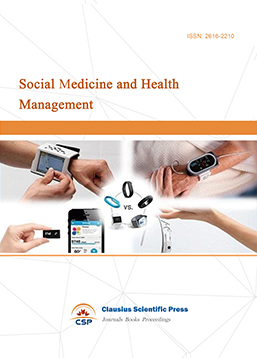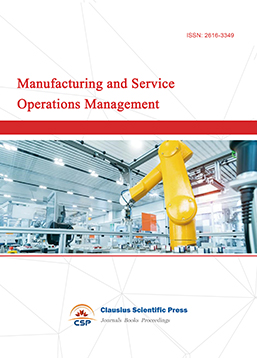The Driving Factors and Implementation Path of Digital Transformation of Manufacturing Companies: Case Study Based on W Company
DOI: 10.23977/ieim.2022.051309 | Downloads: 16 | Views: 1625
Author(s)
Xiaobo Fang 1, Chengxiang Li 1
Affiliation(s)
1 School of Business, Xinyang Normal University, Xinyang, Henan, 464000, China
Corresponding Author
Xiaobo FangABSTRACT
On the basis of reviewing the research results related to digital transformation, we have summarized seven main factors driving the digital transformation of manufacturing industry. These factors are process improvement and innovation, employee factors, data collection and grasp, cost factors, customer needs, competition between peers, and government regulations. We selected W Coal Machinery Co., Ltd., which has 64 years of business history, as the sample of the case study, and used in-depth interviews to collect data. We analyzed the dilemma of W Company's traditional business model from three aspects: "customer experience" "operation process" and "business model", and proposed a digital transformation path to enhance customer experience, optimize operation process and upgrade business model.
KEYWORDS
Manufacturing companies, digital transformation, driving factors, implementation path, case studyCITE THIS PAPER
Xiaobo Fang, Chengxiang Li, The Driving Factors and Implementation Path of Digital Transformation of Manufacturing Companies: Case Study Based on W Company. Industrial Engineering and Innovation Management (2022) Vol. 5: 63-71. DOI: http://dx.doi.org/10.23977/ieim.2022.051309.
REFERENCES
[1] Federica, S., Asif, M. Islam. (2020) How to Harness the Digital Transformation of the Covid Era.Harvard Business Review, September 24, Available online: https: // hbr. org/ 2020/ 09/ how- to- harness- the- digital- transformation- of- the- covid-era.
[2] Editors, S. B. G., Huarng, K. H., Malhotra, A., et al. (2021) Digital transformation as a springboard for product, process and business model innovation. Journal of Business Research, 128:204-210.
[3] Verhoef P C, Broekhuizen T , Bart Y , et al. Digital transformation: A multidisciplinary reflection and research agenda. Journal of business research, 2021, 122(1):889-901.
[4] OOSGA (2021). Definition, case and enterprise transformation strategy deployment of digital transformation, Availabl online: https://oosga.com/pillars/digital-transformation/.
[5] Liere-Netheler, K., Vogelsang, K., Packmohr, S. (2018). Drivers of digital transformation in manufacturing. In 51st Hawaii International Conference on System Sciences (HICSS), Waikoloa, Hawaii (2018), Shidler College of Business, 3926-3935.
[6] Bibla, M. (2020). Why Business are Experiencing a Digital Transformation. Retrieved July 5, 2020, Available online: https://blog.atomicreach.com/whyg-businesses-are-experiencing-a-digital-transformation
[7] IT Pro. (2020). Five reasons why digital transformation is essential for business growth. Retrieved July 5, 2020, Available online: https: // www. itpro. co. uk/ strategy/ 29899/ three- reasons- why- digital-t ransformation- is- essential- for-business-growth
[8] Veldhoven, Z. V., Vanthienen, J. (2021). Digital transformation as an interaction-driven perspective between business, society, and technology. Electronic Markets, (3):1-16.
[9] Setzke,D.S., Riasanow, T., Bhm, M., & Krcmar, H. (2021). Pathways to digital service innovation: the role of digital transformation strategies in established organizations. Information Systems Frontiers, (3):1-21.
[10] Westman, G., Bonnet, D., & McAfee, A. (2014). The nine elements of digital Transformation. MIT Sloan Management Review, 55(3), 1-6.
| Downloads: | 27006 |
|---|---|
| Visits: | 812770 |
Sponsors, Associates, and Links
-
Information Systems and Economics

-
Accounting, Auditing and Finance

-
Tourism Management and Technology Economy

-
Journal of Computational and Financial Econometrics

-
Financial Engineering and Risk Management

-
Accounting and Corporate Management

-
Social Security and Administration Management

-
Population, Resources & Environmental Economics

-
Statistics & Quantitative Economics

-
Agricultural & Forestry Economics and Management

-
Social Medicine and Health Management

-
Land Resource Management

-
Information, Library and Archival Science

-
Journal of Human Resource Development

-
Manufacturing and Service Operations Management

-
Operational Research and Cybernetics


 Download as PDF
Download as PDF